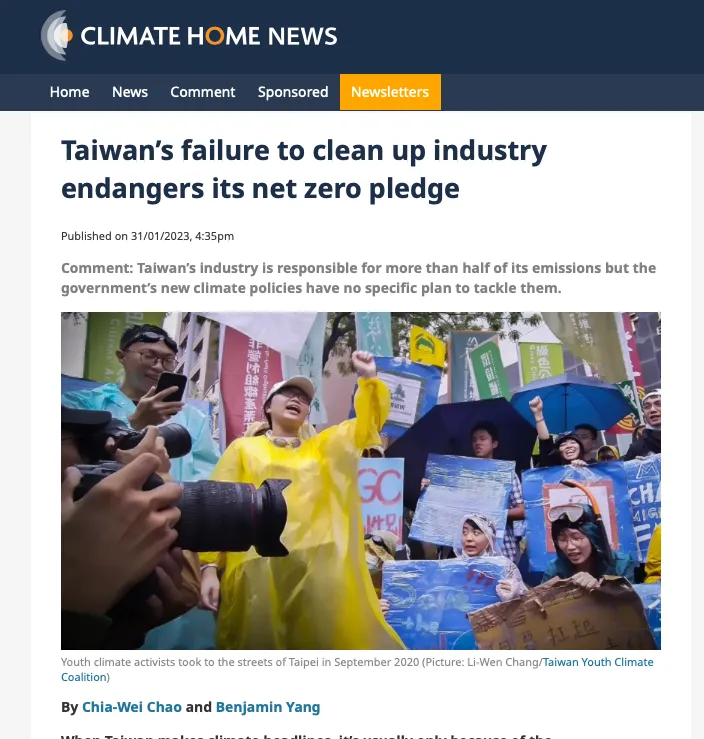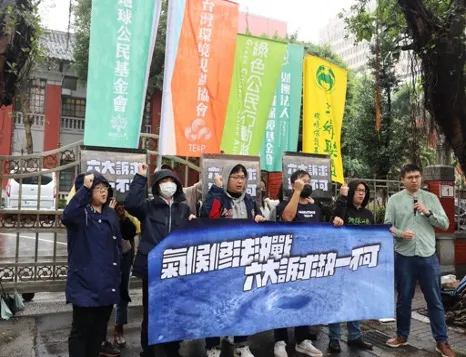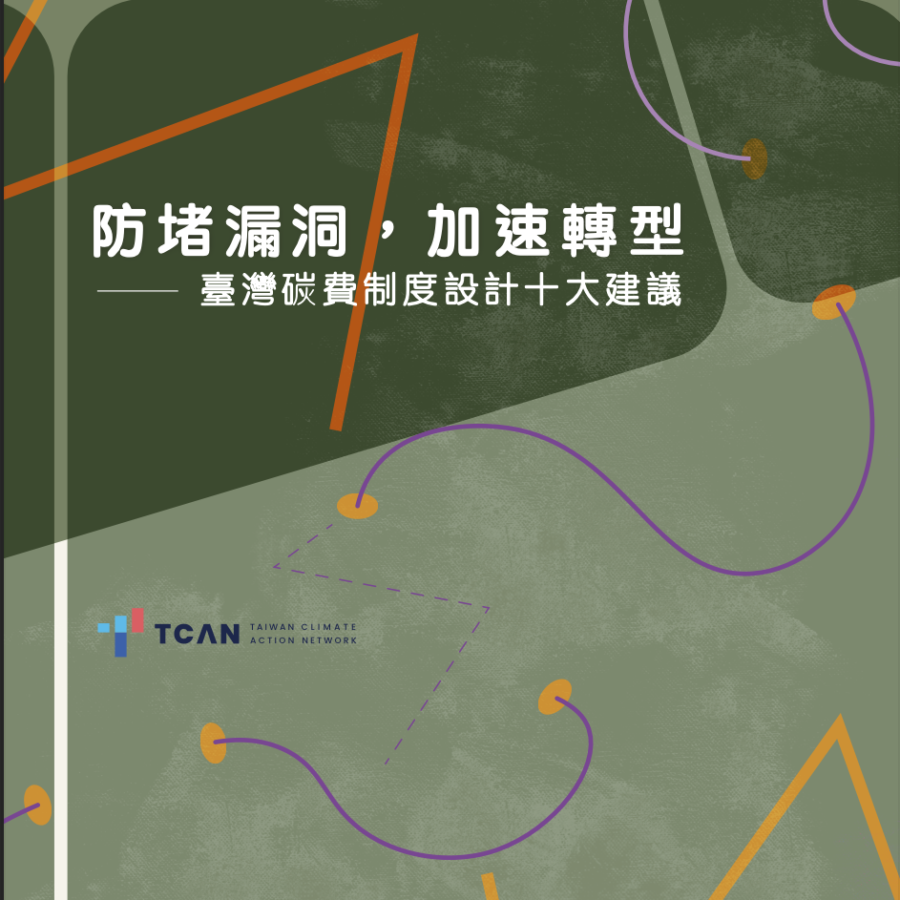
We published a commentary about the 12 key net-zero strategies and the climate change response act on Climate Home News. Due to considerations of reader friendliness and words limitation, the final version of the commentary is quite condensed compared than the original draft. Hence is the complete version:
Chia-Wei Chao and Pei-Wei Yang, Taiwan Climate Action Network
Taiwan has become an issue of interest in the global climate regime lately due to the geopolitical effects of the US-China climate dialogue. The island itself, however, ranks 22nd globally in terms of territorial CO2 emissions and is among the top five most exposed countries to climate risks — the progress of Taiwan’s climate policies therefore cannot be viewed as a mere footnote to the US-China competition, but an issue that merits great scrutiny on its own.
Recently, there are two defining moments in Taiwan climate policy: the announcement of the government’s 12 Key Strategies Action Plan of Net-zero Transitions (hereafter ’12 Key Strategies’) and the passing of the Climate Change Response Act in the Legislative Yuan (Parliament).
First, the details of the 12 Key Strategies announced last December 28th laid out the budget allocation of $900 billion NTD ($30 billion USD) in climate investments up till 2030, as well as some key milestones in that timeframe. These include tripling the installed capacity of renewable energy, initiating hydrogen and CCUS development, accelerating the improvement of energy and material efficiency, and mobilizing lifestyle change and just transitions.
The Climate Change Response Act, on the other hand, was passed on January 10th this year. As a series of major amendments to the existing 2015 Greenhouse Gas Management Act, the Climate Act has made Taiwan the 18th country to have a legally binding net-zero target. In addition to a more stringent long-term target, the Act also authorizes the implementation of carbon levy, enhances the institutional capacity of adaptation, and establishes the governance structure and budgetary support for just transition. However, these progress are still insufficient to ensure Taiwan’s eventual fulfillment of its climate pledges due to the following key shortcomings.
Perhaps the most notable shortcoming in the 12 Key Strategies is the absence of a coherent action plan on industrial decarbonization. The industrial sector contributes to over 50% of Taiwan’s carbon emissions, yet there is no specific strategy dedicated to industrial decarbonization among the 12 Key Strategies. Instead, mitigation measures related to harder-to-abate sectors are scattered across the hydrogen development, energy conservation, CCUS, resource circulation and zero waste Key Strategy Action Plans, without a coherent approach to deploying policy instruments and creating enabling conditions. Furthermore, the huge climate investment isn’t guided by mission-oriented principles. This unprecedented $900 billion NTD climate investment should focus on accelerating the market readiness of hydrogen, CCUS and long-duration storage etc. But the Action Plan only allocated a $4.6 billion NTD budget for hydrogen and $3.7 billion NTD for CCUS, which is less than 1% of the total climate investment and remains inadequate in spurring demand and creating cost-competitiveness.
As for the Climate Change Response Act, the years-long campaign of local climate advocates has led to significant gains, such as tightening the criteria for offset programs and limiting the proportion of revenues allocated back to large emitters in the carbon levy design, as well as strengthening the overall climate governance structure by expressly stipulating the responsibilities of each ministry and local governments. But there remain three key hurdles that we couldn’t break. First, an independent advisory body like the Climate Change Committee in the UK failed to be established due to the restrictions of bureaucratic organizational structure. Second, the external cost of emission is only partially internalized through the carbon levy, as the fossil fuel subsidies reform was deleted from the final text due to recent instability in energy prices, while broader fiscal and tax reforms were blocked by the Ministry of Finance. Lastly, climate litigation, which can be a helpful means to hold the government and corporations accountable, was rejected because of the judicial and administrative systems’ unfamiliarity with such types of litigation.

The experience of these historically significant but ultimately insufficient progress in Taiwan also hold several important takeaways for global climate policy. Although the upcoming EU CBAM and discussions around global carbon price have softened the traditional opposition from energy-intensive industries to carbon pricing, attempts to avoid the impacts of mitigation efforts by lobbying for low levy rates, loose offset rules and subsidies via carbon levy revenues persist. Such tactics can be countered through a global stocktake process that reviews the content of carbon price schemes of different countries and jurisdictions to highlight best practices. Moreover, during the parliament’s deliberations on the Climate Change Response Act, most legislators remain unfamiliar with several important concepts such as the ratchet mechanism of the Paris Agreement or how the national adaptation plan works, which caused unnecessary delays and impracticable proposals. Hence, regular training courses that build up climate literacy of parliamentary staff is crucial to passing a high-quality climate change law. Finally, while G7 tries to accelerate the decarbonization of industrial sectors through the Climate Club, industrial decarbonization knowledge networks are still comparatively narrower than those of renewable energy or mobility electrification. Policy mechanisms such as carbon contracts for difference and purchase commitments are hence key for manufacturing hubs like Taiwan in enabling industries’ transitions to climate-friendly technologies.
Original source: Link



